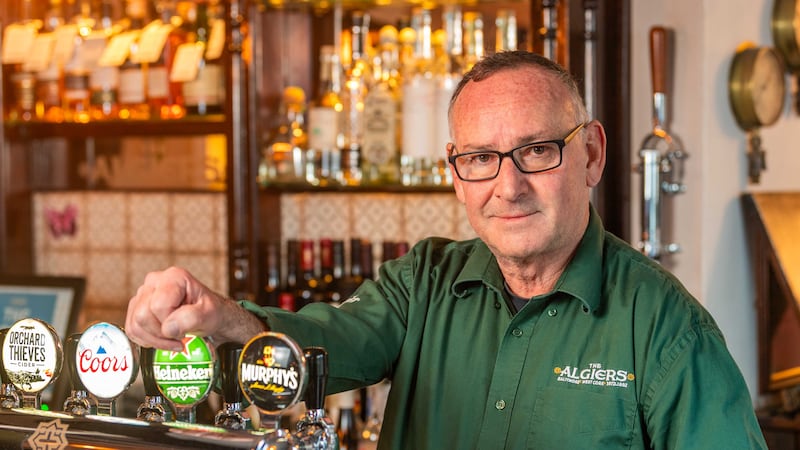The wave of scandals engulfing Sinn Féin could alter the Irish political landscape in more ways than one. As well as having an impact on the formation of government it could determine the shape of the opposition in the next Dáil, and ultimately the long-term future of the political system.
The obvious fallout from the various Sinn Féin scandals is that they present Fine Gael and Fianna Fáil with an unrivalled opportunity to win enough seats in the forthcoming election to form another administration with, or possibly without, a junior coalition partner.
The cumulative impact of Sinn Féin’s response to the controversies has been to expose what Minister for Finance Jack Chambers called “a culture of concealment”, which involves the party putting its own interests ahead of the public interest. If that is the way it behaves in opposition, it is not difficult to imagine what Sinn Féin would do if it had its hands of the levers of power and control over the institutions of the State. It is something that should affect the views not only of voters, but also of the smaller parties in the Dáil, some of whom have allied themselves with Sinn Féin on a regular basis. There is now an opportunity for them to come together and present the electorate with an alternative force that could participate in government or even replace Sinn Féin as the main opposition in the next Dáil.
The recent Irish Times/Ipsos poll put the Labour Party on 6 per cent, the Greens on 5 per cent and the Social Democrats on 4 per cent. The total of 15 per cent would put the combined strength of the three close enough to potentially overtake Sinn Féin as the main focus of opposition to the Fine Gael/Fianna Fáil axis. The poll numbers for Dublin were even more striking with Labour on 13 per cent, the Greens on 9 per cent and the Social Democrats on 6 per cent. That put the broad social democratic left on 28 per cent of the vote in the capital compared with 13 per cent for Sinn Féin.
What would happen if Russians landed at Shannon and took over the airport?
Simon Harris is facing his first big test. Can he shake off the TikTok Tánaiste image?
At the signing of the Anglo-Irish Agreement, we sensed we were witnessing a historic event
Ireland’s neutrality is widely regarded as a joke. It’s time we got real
The big question is whether the three parties are capable of co-operating. One obvious problem is that the Greens are currently in government with Fine Gael and Fianna Fáil, but TDs in both big parties have been quite open about their desire to dump the Greens if they can after the next election.
The other problem is that the Social Democrats and their leader Holly Cairns never pass up an opportunity to take a swipe at the Labour Party. The Social Democrats, like the Trotskyist hard left and some rural Independents, seem to regard participation in government as a bad thing in itself and appear content to remain in the comfortable position of denouncing the government of the day from the opposition benches.
However, voters clearly regard Labour, the Greens and Social Democrats as loose allies, as the transfers in the local and European elections attest. The transfers from eliminated Social Democrats helped elect a number of Labour councillors, particularly in Dublin, and both parties and the Greens transferred well to each other. The most obvious example of this was the European election count in Dublin where Labour candidate Aodhán Ó Ríordáin was pushed ahead of Independent Ireland’s Niall Boylan for the final seat with the help of a massive transfer of 16,614 votes – 44 per cent of his total – from outgoing Green MEP Ciarán Cuffe. The word at the count was that if Cuffe had been ahead of Ó Ríordáin he would have been elected with Labour transfers.
As well as a substantial proportion of their supporters having a clear affinity, Labour and the Greens have something else in common. Both parties have served in government and, while they have suffered electoral setbacks as a result, they can both point to substantial achievements in office.
In coalition with Fianna Fáil after 2007 the Greens began to implement their agenda and did not shirk facing up to the tough measures required to save the country from tipping into the financial abyss. In coalition with Fine Gael, Labour also took its responsibilities seriously and managed to protect people on welfare payments from the worst rigours of the bailout programme. One difference between the parties is that the Greens have owned their periods in government and speak proudly of their achievements, particularly the implementation of their agenda that they insisted on as the price of participation in the current coalition.
By contrast, Labour has always appeared a bit ambiguous about its role in government and, as a result, gets no credit for helping turn the economy around and eliminating unemployment. Dumping party leader Eamon Gilmore in 2014 after a bad showing in the local and European elections was the height of folly and sealed the party’s fate in the subsequent general election. At this stage it is impossible to judge just how damaging the current controversies will be to Sinn Féin but, given that they come in the wake of the party’s poor showing in the local and European elections, a better opportunity for a new left-of-centre configuration is unlikely to present itself.













